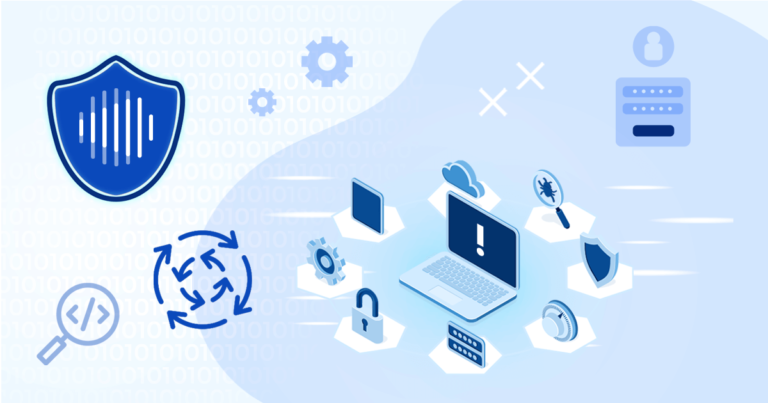In today’s interconnected digital
landscape, cyber threats are constantly evolving. One emerging threat that has
gained significant attention and is nowadays “trendy” is the supply chain
attack. Targeting the software or hardware supply chain, these attacks exploit
vulnerabilities in trusted entities, posing a substantial risk to organizations
and their customers. In this blog post, we will explore the nature of supply
chain attacks, their potential consequences, and strategies to safeguard your
organization against this growing threat.
Understanding Supply Chain Attacks
A supply chain attack, also known as a value-chain or third-party attack, involves infiltrating a trusted entity within the supply chain to gain unauthorized access or introduce malicious components. Rather than targeting the primary organization directly, attackers exploit vulnerabilities in the supply chain ecosystem to achieve their objectives. The diverse nature of the supply chain that includes businesses in all sizes and industries increase the target surface and thus risks for the primary organization.
The attack typically follows a series of steps. First, the attacker identifies a trusted vendor, supplier, or manufacturer in the supply chain. These targets are usually more attractive for the attackers due to their weaker cyber security posture in comparison to the primary organization. They then compromise the systems, inject malicious code, or tamper with the hardware or software during the manufacturing or distribution process. Once the compromised products reach the target organization or end-users, the attacker exploits the vulnerabilities to gain unauthorized access, steal sensitive data, sabotage systems, or establish persistence for future attacks.

Consequences of Supply Chain Attacks
Supply chain attacks can have severe consequences that extend beyond the initial target. Here are some key implications:
Widespread impact: As supply chains are interconnected, compromising a single entity can have a cascading effect, potentially affecting multiple organizations and their customers. The ripple effect can disrupt operations, compromise data integrity, and erode trust across the supply chain ecosystem.
Reputation damage: Organizations affected by supply chain attacks suffer reputational damage. Customers, partners, and stakeholders lose confidence in the organization’s ability to protect their data and systems. Rebuilding trust can be a long and challenging process.
Difficulty in detection: Supply chain attacks are designed to remain undetected for extended periods. Attackers employ sophisticated techniques to camouflage their activities, making it challenging to identify the compromise. Traditional security measures may not raise alarms as the malicious behavior appears legitimate.

Mitigating the Risk of Supply Chain Attacks
To protect your organization from supply chain attacks, it is crucial to implement robust security measures and proactive strategies. Here are some essential steps:
Due diligence and risk assessment: Conduct thorough due diligence before engaging with vendors, suppliers, or third-party partners. Assess their security practices, review past security incidents, and verify compliance with industry standards. Incorporate risk assessments into your vendor selection process to make informed decisions.
Perform continuous risk assessment: Do perform continuous risk assessment once you incorporate the vendor, supplier or the third-party, after they are considered safe. Neither their online presence, or the cyber sphere is static. The constantly evolving nature of the two make periodic risk management an essential matter.
Secure software and hardware procurement: Establish secure procurement practices by partnering with trusted suppliers and manufacturers. Implement procedures to validate the integrity of the software and hardware components you receive. Verify the authenticity of products, use reputable sources, and monitor for any signs of tampering.
Implement strong security controls: Deploy a robust security framework within your organization, including measures such as encryption, access controls, intrusion detection systems, and continuous monitoring. This helps protect against unauthorized access and alerts you to potential threats or anomalies.
Regular patching and updates: Keep all software, firmware, and hardware components up to date with the latest security patches and updates. Vulnerabilities are frequently discovered, and timely patching reduces the risk of exploitation.
Multi-factor authentication (MFA): Implement MFA for critical systems and accounts to add an extra layer of protection. This helps mitigate the risk of unauthorized access, even if passwords are compromised.
Incident response planning: Develop a comprehensive incident response plan that includes scenarios specific to supply chain attacks. Define clear roles and responsibilities, establish communication channels, and regularly test and update the plan to ensure an effective response.
Security awareness and training: Educate employees about the risks associated with supply chain attacks and the importance of vigilance. Provide training on identifying social engineering techniques, recognizing suspicious activities, and reporting incidents promptly.

Conclusion
As supply chain attacks continue to rise, organizations must remain vigilant and take proactive steps to protect their security. By conducting due diligence, carrying out periodic risk assessments, implementing strong security controls, and fostering a culture of awareness, organizations can strengthen their resilience against supply chain attacks. A robust security posture, combined with continuous monitoring and incident response readiness, is vital in safeguarding critical assets and maintaining trust in the digital ecosystem.
Remember, staying ahead of evolving cyber threats requires ongoing effort and collaboration. Together, we can mitigate the risk of supply chain attacks and ensure a secure digital environment for organizations and individuals alike.


